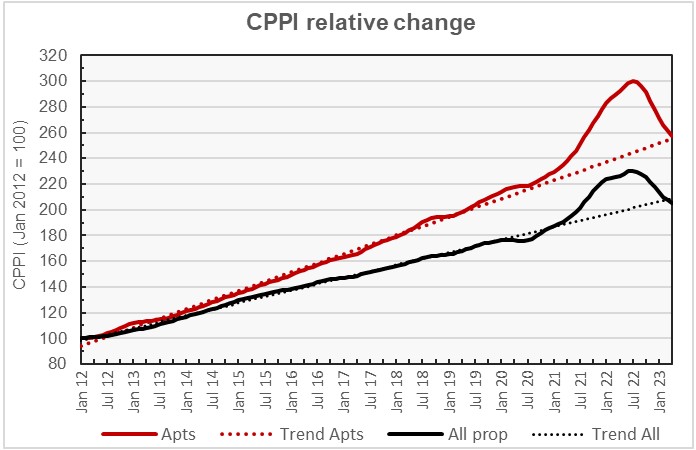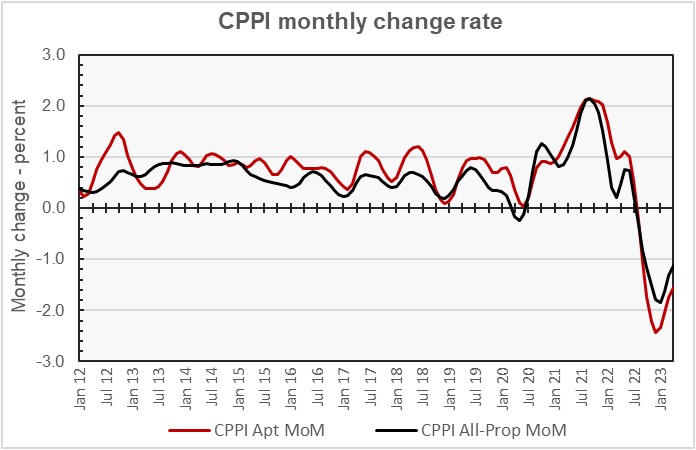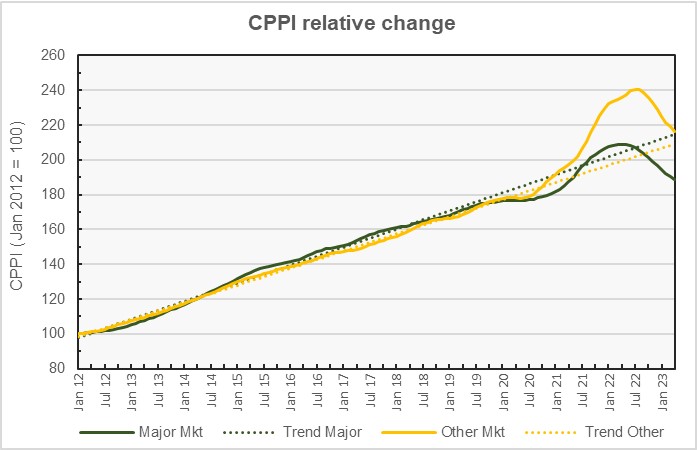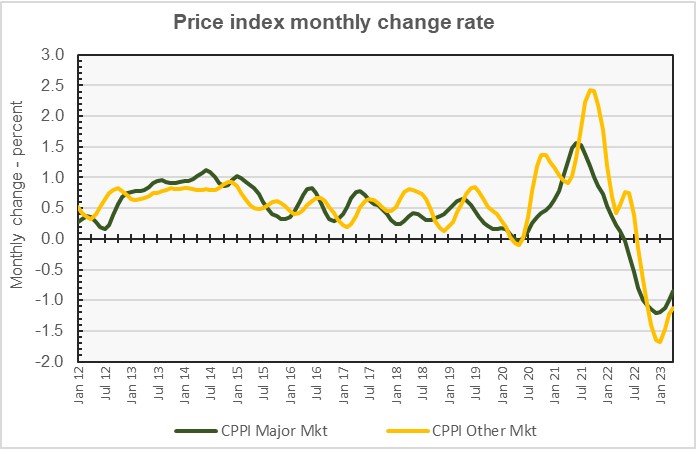The latest commercial property price report from MSCI Real Capital Analytics said that multifamily property prices fell 1.5 percent in April from their level of the month before. While this was again the largest month-over-month decline for any of the commercial property types tracked in the report, the monthly rate of decline is down from last month’s drop of 1.9 percent. Multifamily property prices were reported to be down 12.1 percent year-over-year. This was also the largest decline for any of the property types tracked.
Defining CPPI
MSCI tracks an index called the Commercial Property Price Index (CPPI). The index is computed based on the resale prices of properties whose earlier sales prices and sales dates are known. The index represents the relative change in the price of property over time rather than its absolute price. Note that, as new properties are added to the MSCI dataset each month, they recalculate the CPPI all the way back to the beginning of the data series.
All property types see price declines
Prices for industrial property, which had been rising up to this point, fell 0.5 percent for the month. Office properties within central business districts (CBDs) had the smallest price drop in April, falling 0.2 percent. However, this property type is the worst performing over the past three years with a price decline of 0.3 percent. Suburban offices property prices fell 0.7 percent for the month. Retail property prices fell 0.5 percent.
All property types tracked also saw price declines on a year-over-year basis. Industrial property was the best performing with a price drop of 0.8 percent. Prices for offices within CBD’s were down 3.8 percent while prices for suburban offices fell 6.3 percent. Prices for retail property were down 6.0 percent.
Returning to trend
The first chart, below, shows how the CPPI’s for all commercial property and for apartments have changed since January 2012. To simplify the comparison, both CPPI’s have been normalized to a value of 100 in January 2012. The chart also contains trend lines showing the straight-line average rate of price appreciation for the two asset classes based on their performance from January 2012 to December 2019.

The chart shows that recent price declines have brought pricing back close to the previous trend lines. Multifamily property prices are currently about 1 percent above the pre-pandemic trend while pricing for all commercial property as a single asset class is currently about 2 percent below trend.
The next chart plots the month-over-month changes in the values of the CPPI since January 2012 for all commercial property as a single asset class and for apartments. The chart shows that prices have been falling for both asset classes for the last 9 months but that the rate of decline has lessened recently.

Major metros well below trend
The MSCI report provides data comparing the price changes of commercial property in 6 major metro* areas against those in the rest of the country, although it does not separate out apartments from other commercial property types in this comparison. The next chart, below, plots the history of the price indexes since January 2012 for both market segments along with trend lines based on straight-line fits to the changes in these between January 2012 and December 2019.

The chart shows that property prices within the major metros did not get the pandemic bump that prices elsewhere experienced. Major metro prices fell below their long-term trend line 8 months ago and have fallen further behind ever since. Major metro prices are now 12 percent below their trend. By contrast, prices for commercial property outside the major metros rose significantly during the pandemic. While they are now falling back, they are still 3.5 percent above their long-term trend.
The final chart plots the history of the month-over-month change in the price indexes for the two property market segments since January 2012. The chart shows that month-over-month price appreciation has been negative for the major markets for a year while it has been negative for the other markets for 9 months. The rate of price declines for the other markets has exceeded that for the major markets for the last 7 months.

By the numbers, price appreciation for commercial property in major metros was reported to be -0.9 percent for the month and -9.8 percent for the year. Price appreciation for commercial property in non-major markets was reported to be -1.1 month-over-month and -8.3 percent year-over-year.
The full report provides more detail on other commercial property types. Access to the MSCI report can be obtained here.
*The major metros are Boston, Chicago, Los Angeles, New York, San Francisco and Washington DC.













